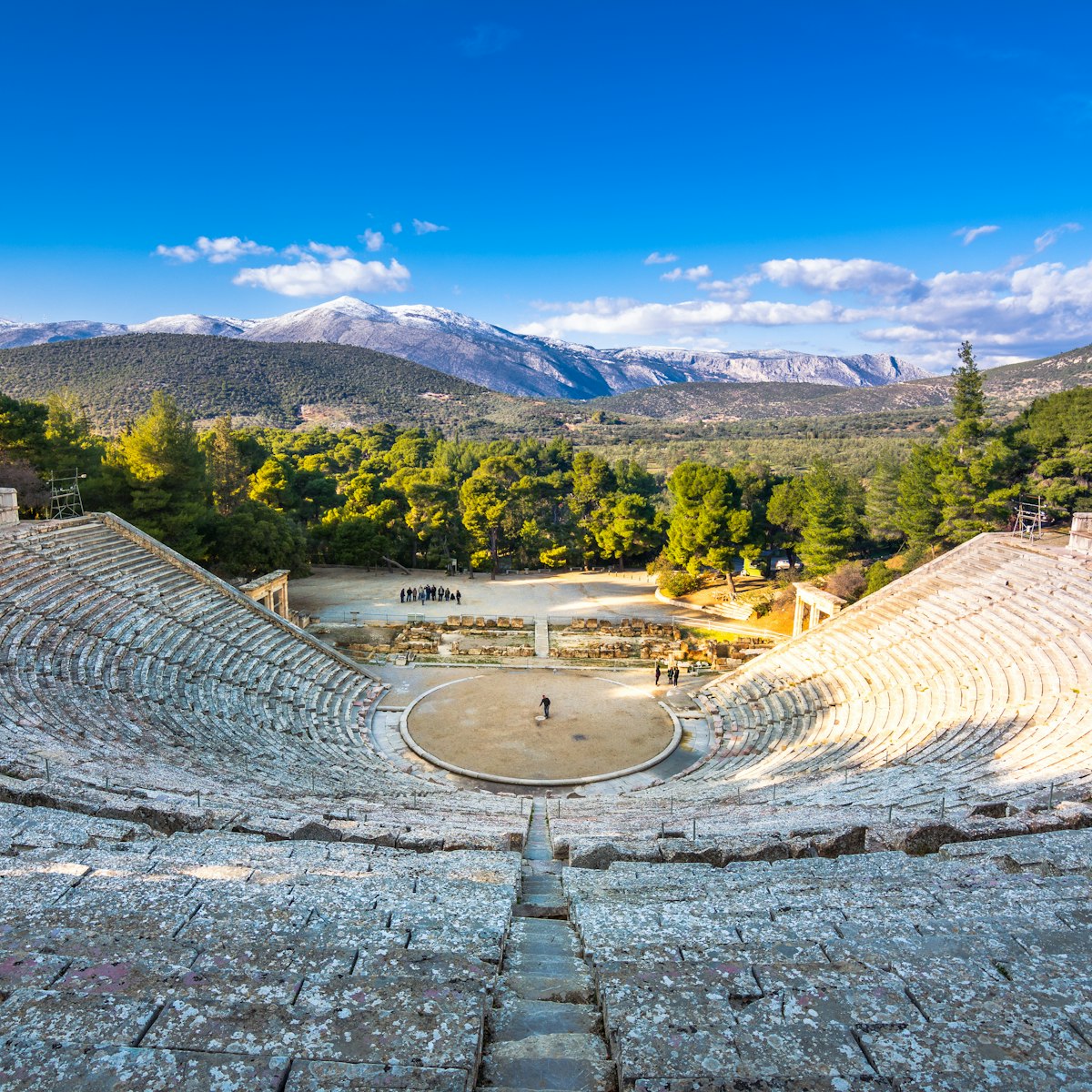The Sanctuary of Asclepius was dedicated to the god of healing. The ruins include the huge katagogeion, a hostelry for pilgrims and patients; the large banquet hall in which the Romans built an odeum (a room for musical performances); and the stadium, a venue for athletic competitions. Just beyond is the remarkable tholos, a circular cult building, the Temple of Asclepius and the abaton (dormitory), where cures were effected. Excellent information panels (Greek and English) make the site easy to navigate.
You first reach the large, square katagogeion, beyond which is the hestiatorion, the former-gymnasium-cum-banquet-hall in which the Romans built an odeum. It was here that ritual meals and the Festival of Asclepius took place. A partially-reconstructed monumental gateway gave access to it from the other side.
The path meanders past the remains of the stadium on your left. Ahead is the circular tholos (built 360–320 BC and under heavy reconstruction at research time), originally surrounded by two circles of columns: Doric and Corinthian. In the centre there used to be a small basement labyrinth that perhaps recreated the god's underworld abode.
To the northeast are the foundations of the Temple of Asclepius and next to them is the two-level abaton. The therapies practised here seemed to have depended on the influence of the mind upon the body. It is believed that patients were given a pep talk by a priest on the powers of Asclepius, then put to sleep in the abaton to dream of a visitation by the god. The dream would hold the key to the healing process; snakes may also have been employed in the cures.
East is the Sanctuary of Egyptian Gods, which indicates that the cult of Asclepius was an adaptation of the cult of Imhotep, worshipped in Egypt for his healing powers. Also here is a temple of Artemis.







